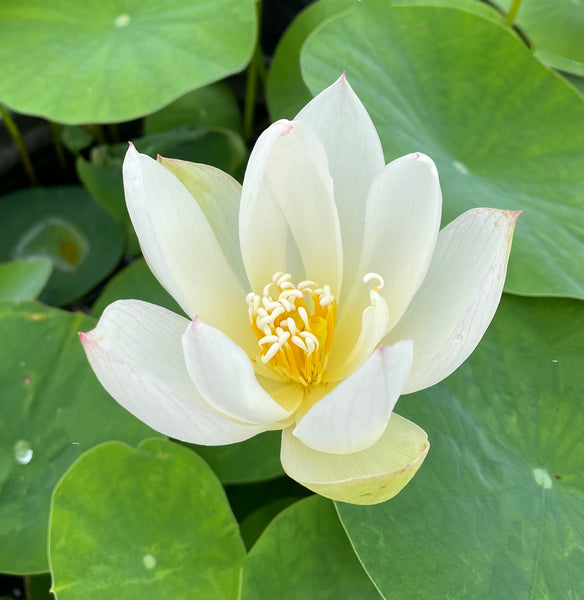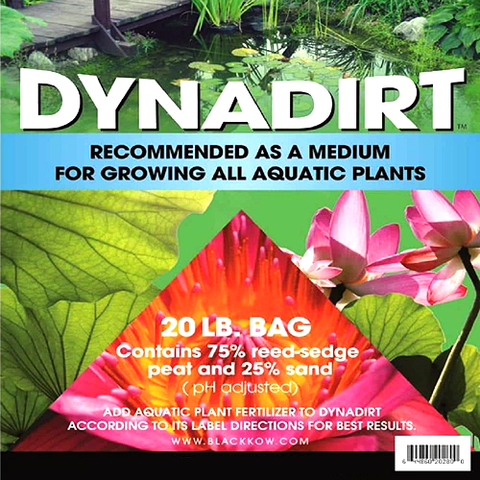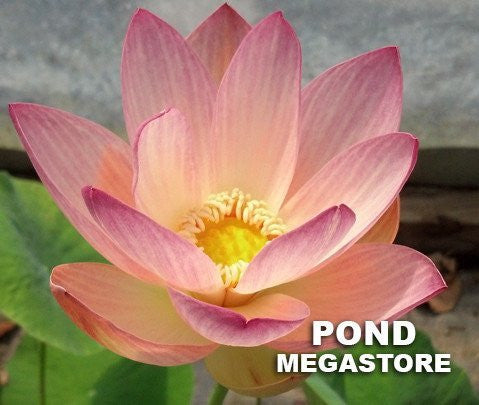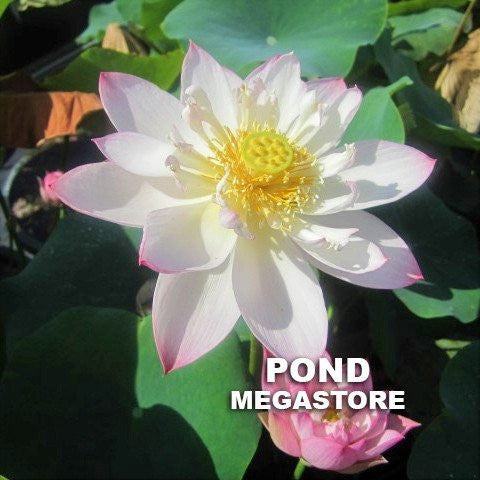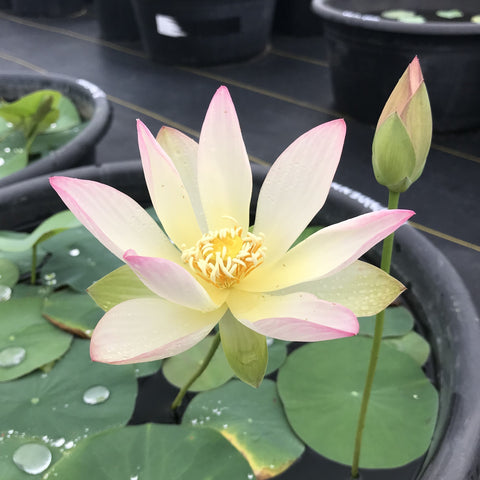- Lotus Plant Description
- Little Princess Lotus is a dainty little lotus with classic, single-petal flowers in pure-white and small, emerald-green (6 - 8 inches in diameter) lotus leaves. Petite, yellow receptacles and stamens adorn the centers of this delicate variety. Little Princess Lotus is a small gem that can be planted in small containers (11 - 16 inches in diameter) for Exquisite of Bowl Lotus-- or a little wider container ( 16 - 20 inches in diameter) to grow Bowl Lotus. Bowl/White/Single
- Many factors determine lotus size
- Variety chosen
- Hours of sunlight
- Fertilizer
- Container size
Fill your wide, no holes container 2/3 full with loam soil. Dig a shallow trench in the surface of the soil and gently place your lotus tuber in the trench, being careful not to break or damage the growth tips. Cover all but the growth tips with an inch of soil and gently add two inches of water above the soil in your container. Place the container where it will receive at least 8 + hours of sunlight daily. In a week or two you should have coin leaves on the surface of the water--a week or two after that you should have aerial leaves growing out of the water. Once you have aerial leaves, you may fertilize your lotus. Simply press 2 fertilizer tabs into the soil near the roots of your lotus, taking care not to damage the roots. Do this once a month, throughout the growing/blooming season, June through September.
Fertilize monthly with fertilizer tabs.
PONDMEGASTORE TIP A reminder to keep your eye on the water level in the containers of this small lotus variety as water evaporates from the surface of the pots quickly throughout the hot, summer months.
What Is Loam Soil?
Loam soil is a good mixture of Topsoil and Sand
If you are lucky enough to have good topsoil in your backyard, by all means, use your topsoil. All you will have to do is add fertilizer. If you are not so lucky--and your backyard is sand or heavy red or yellow clay, you can mix up a batch of loam soil.
You can create your own loam soil by mixing these two ingredients together
- 2/3 Inorganic Topsoil (Little or no organic material added)
- 1/3 Pool Filter Sand
Mix together thoroughly with a little water. Your soil should clump when squeezed. If your soil is mixed properly, it will not muddy your pond water.
You can purchase inexpensive bags of inexpensive / poor Topsoil at Lowes or Home-Depot. Good soil clumps together as a ball in your hand with only a little moisture.
Don't buy brands like Scott's or Miracle-Gro, as they will contain too much organic matter that can foul your water. Buy an unbranded bag of topsoil instead.
You can purchase Pool Filter Sand at any store that sells pool supplies.
Loam soil is well suited for all aquatic plants (except oxygenators). Oxygenators rarely need to be planted, just anchored in the substrate or in a container filled with sand or 1/8 inch pea gravel.
Sand holds little water but does allow for aeration and drainage.
Some DO's and DON'TS regarding Aquatic Planting Soil
DO NOT use potting soils ( as they are too light and will float right out of the pot). Potting Soil has organic material that will rot and foul your water!
DO NOT add too much composted material (as it is too rich in organic matter and it will ferment underwater and destroy the ecology of your pond).
DO NOT use 100% calcined clay as there is no nutritional value in calcined clay.
DO NOT add rocks, stones or pebbles to the top of your planting container as this will inhibit the growth of your plants. Plants do not grow in rocks and stones in nature!
DO NOT purchase API Aquatic Planting Media or Microbe-lift Aquatic Planting Media as these products are NOT suitable for waterlilies, lotus or most other pond plants. They are suitable for submerged grasses ONLY!




